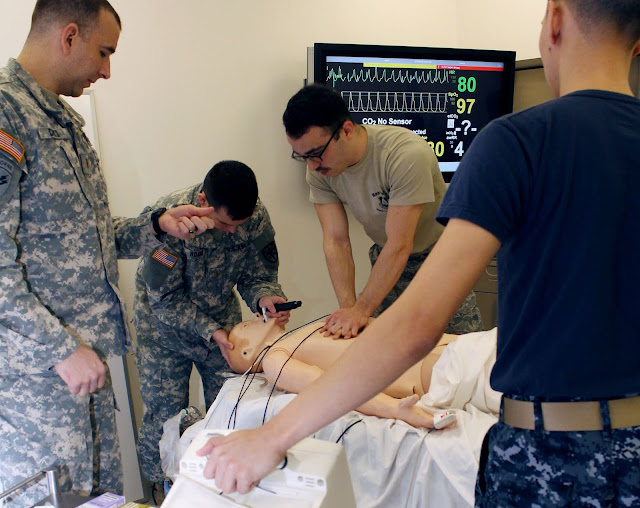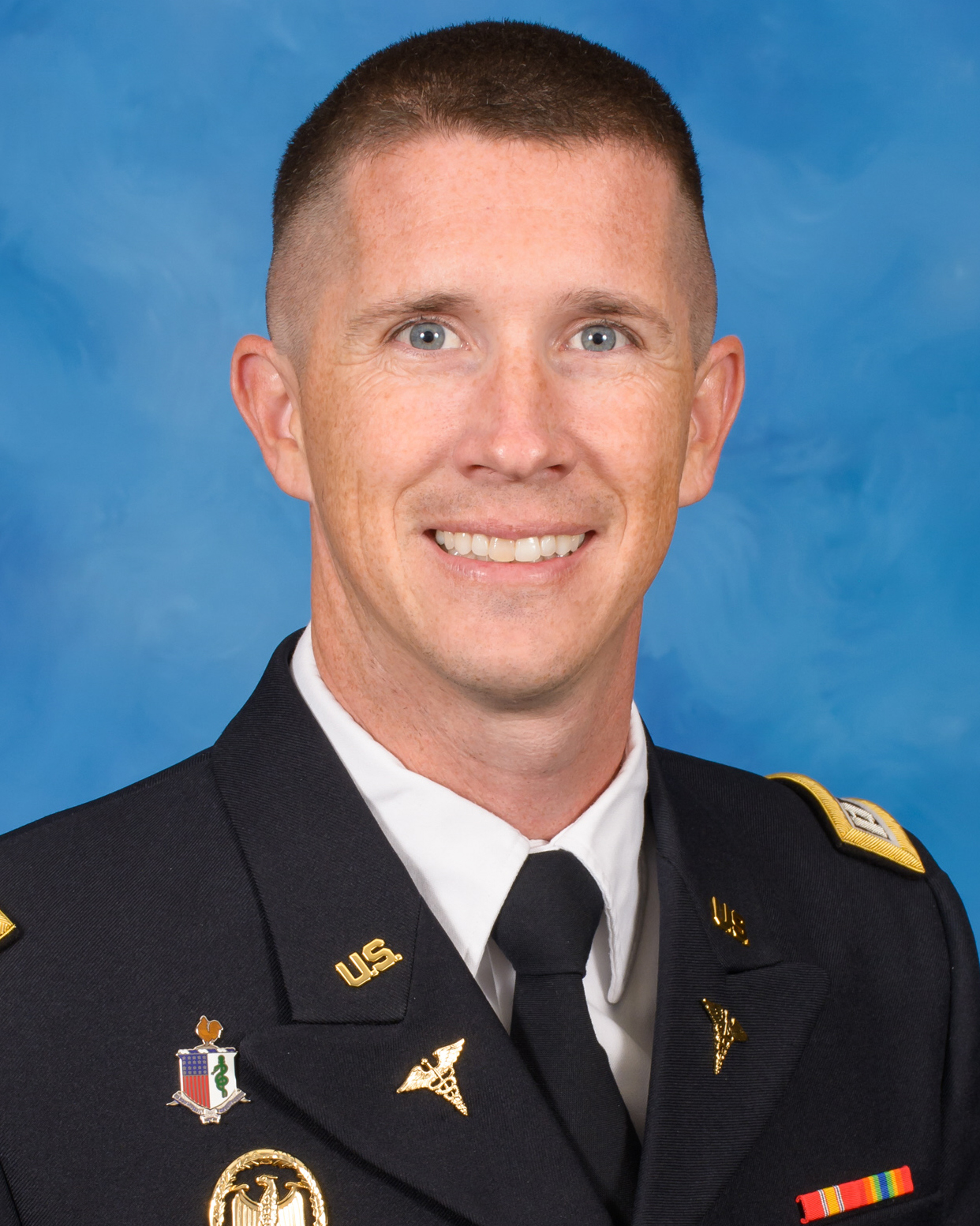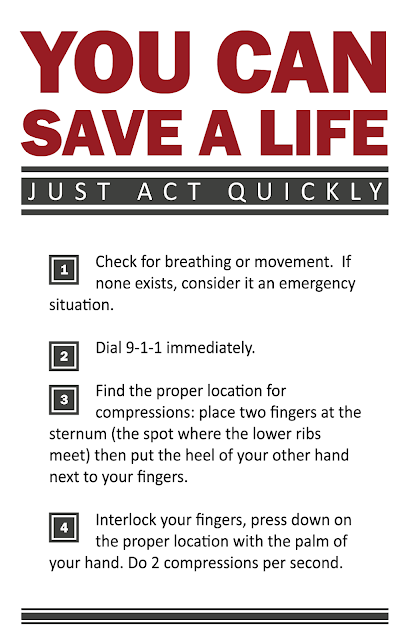USU Alumnus, Student Save Texas woman’s life
Swift action saved the life of a Texas woman last week when two members of the USU family happened to be on site as a woman went into cardiac arrest.
Army Captain (Dr.) Jason Ausman was among the nation’s military service members and civil servants who were off work on Friday, Nov. 10, in observance of Veterans Day. He was taking advantage of the break and having breakfast with his wife and friends from USU who were also down in Texas.
Army 2nd Lt. Donald Rees and his fiancée, Army 2nd Lt. Renuka Shukla, joined the Ausmans at a Cracker Barrel restaurant in Harker Heights, Texas, near Carl R. Darnall Army Medical Center, where Jason is a first-year emergency medicine resident. Rees, Shukla, and Army 2nd Lt. Chelsea Ausman are all fourth-year medical school classmates at USU; Jason earned his M.D. degree from USU in May.
The four had just ordered breakfast when they heard someone several tables away in the restaurant yelling, “Help! My mom is dead. I need a doctor.” Without hesitation, Ausman and Rees sprang from their seats and ran over to find Anita Boucher, 64, pale and lifeless in her chair.
Lance, Boucher’s son, thought his mother was already dead. “She was gone,” he told the local news station KCEN-TV. “You could see it in her face. She was gone.”
But that didn’t deter Ausman and Rees.
They lifted Boucher down to the floor and Ausman began a more thorough assessment, stabilizing her cervical spine and ensuring her airway was open while Rees began cardiopulmonary resuscitation.
“Up until this point it honestly felt like I was back in Basic Life Support training. It just felt automatic. That first compression, though, was something else,” said Rees. “There was a civilian trying to start compressions after I had made the comment of wanting to start compressions, but he was pressing gently and slowly. I told him I'd take over.”
While Shukla and Chelsea Ausman kept the gathering crowd calm and at bay, Rees did chest compressions for several minutes, talking to Ausman about her airway before Boucher finally began breathing and opened her eyes. She was confused, still pale, and barely had a pulse. Lance Boucher started yelling, “This guy saved her life!” and his mother kept apologizing. Rees and Ausman stayed with her until the EMS team arrived. They briefed the EMS team about what had happened and the actions that were taken. One of the medics saw Rees’s Department of Defense ID card when he asked for his identification and said, “Look, this guy is an Army medic.” Rees tried to clarify that he was a medical student and didn’t graduate until May, but it was lost as the EMS team left the restaurant. Boucher was taken to the hospital, where she was admitted to the intensive care unit.
The Army officers went back to eating their breakfasts as if nothing had happened, while customers “high-fived” them on the way to their table. Meanwhile, unbeknownst to Ausman and Rees, the manager was looking for them, unaware they were still in the restaurant, to say thanks. Boucher’s son also wanted to offer his thanks, but had not gotten their names. All he knew was one was an Army doctor from Fort Hood, so he turned to the media to find out if anyone knew who they were. Soon, the media was aiding in the search for the mystery “hero” who had saved Boucher’s life.
After a week in the hospital, the man reached out to the go-kart track to see if they knew who had saved his life. The manager had no idea, but contacted dozens of the riders who had registered that day, asking if any had performed CPR at that racetrack. They finally reached Ausman, who responded and gave them permission to share his contact information with the man. Within a few days, he received an emotional message from the grateful man. “Considering the type of heart attack I had, the normal survival rate is about two percent for an out-of-hospital attack,” he said. “The circumstances that allowed our paths to cross and your actions are as big as life itself. Just to say ‘thank you’ seems insignificant for what you did for me.” He went on to say that his friends told him that only 30 seconds lapsed between the time he passed out and when Ausman was there to assist. “I am very lucky to be alive today.”
“This experience was surreal. This was not a training environment, I definitely felt a difference. And for me at least, this was the first time in medicine that we were the most qualified people in the room, which is interesting considering I'd never performed compressions on a live patient before,” Rees said. “Jason was fantastic, going over scenarios and adding a calming presence to everyone trying to help. He was ready to jump in on compressions to give me a break when she came back to us.”
"I certainly don't consider myself a hero,” Ausman said. “I just happened to be in the right place and used my training to help somebody that was in need of it. I was simply doing what I do every day at work, and I hope that anybody would have helped her the same way if I wasn't there."
“What we did wasn't out of the realm of expectations of a USU graduate in the slightest,” said Rees. “Any one of my classmates would have done the same and would have been expected to do the same and more if needed.”









